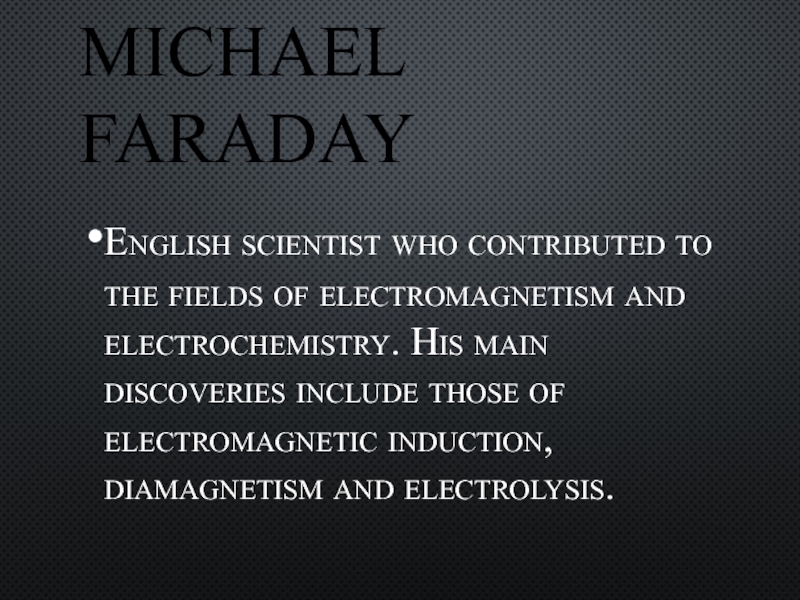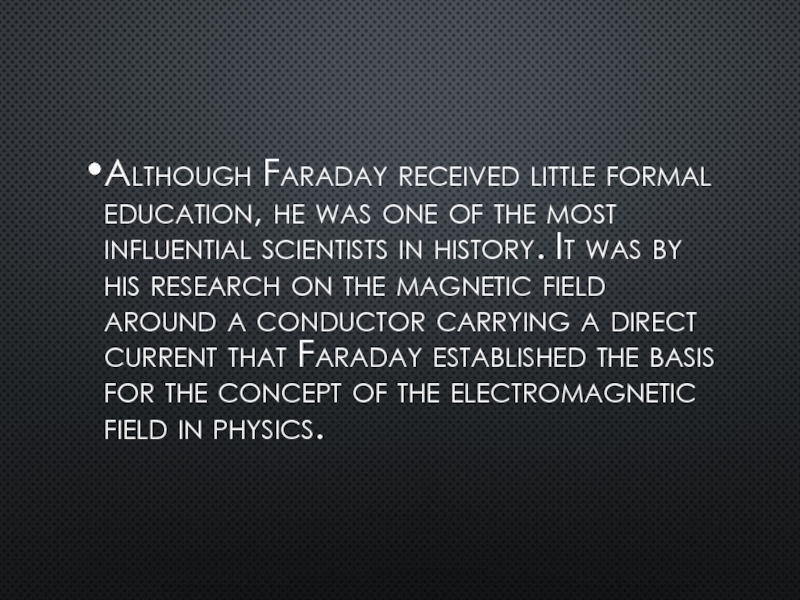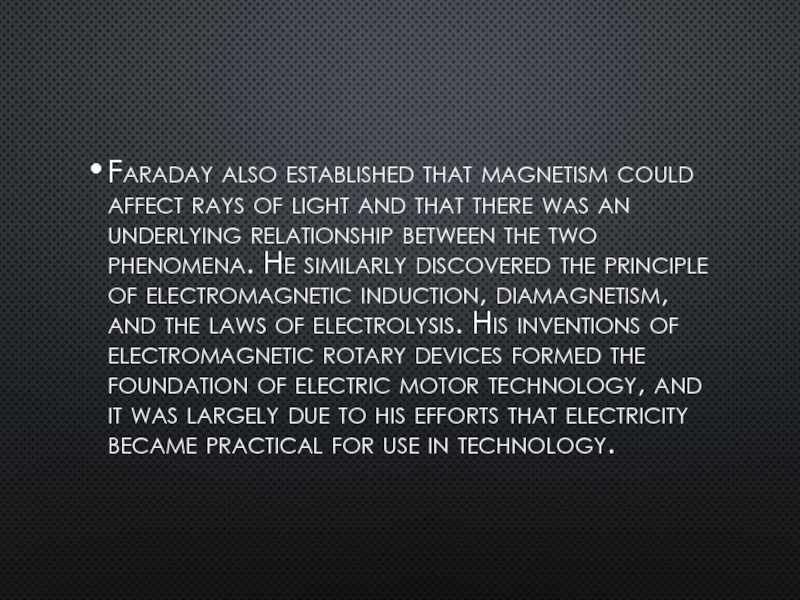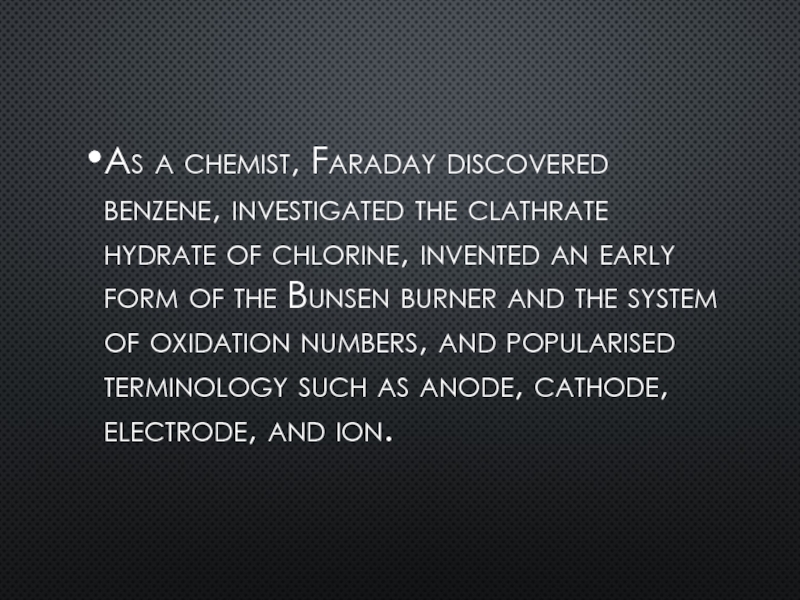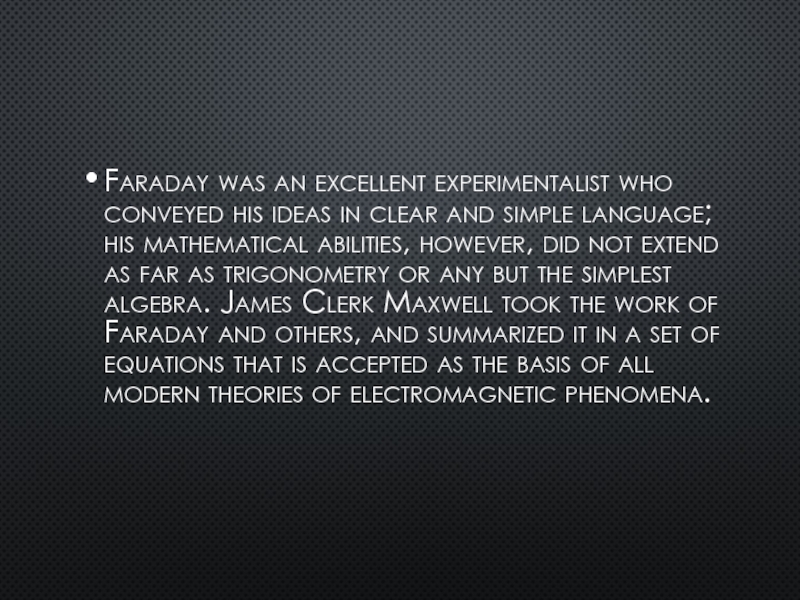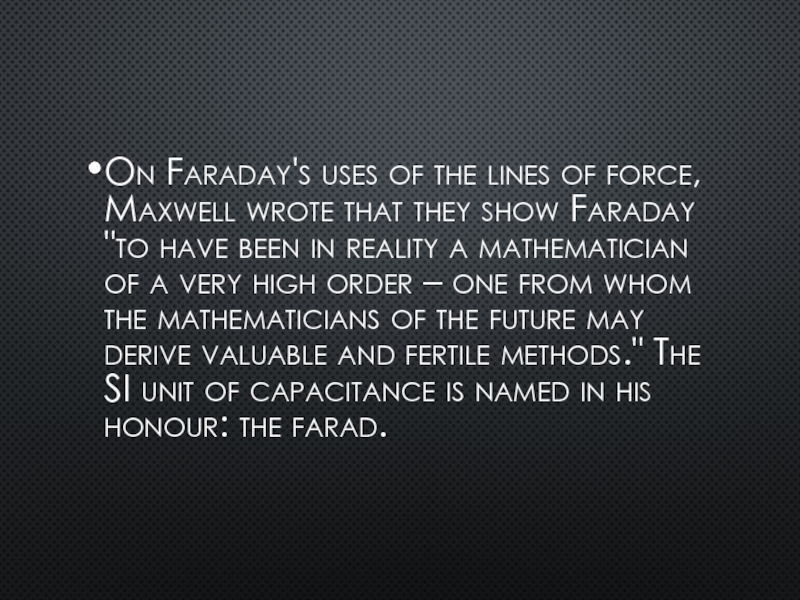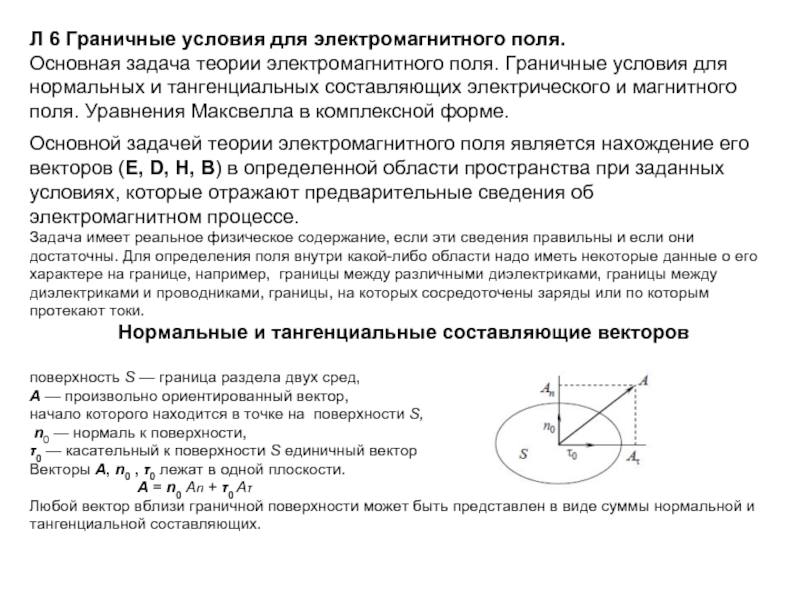- Главная
- Разное
- Дизайн
- Бизнес и предпринимательство
- Аналитика
- Образование
- Развлечения
- Красота и здоровье
- Финансы
- Государство
- Путешествия
- Спорт
- Недвижимость
- Армия
- Графика
- Культурология
- Еда и кулинария
- Лингвистика
- Английский язык
- Астрономия
- Алгебра
- Биология
- География
- Детские презентации
- Информатика
- История
- Литература
- Маркетинг
- Математика
- Медицина
- Менеджмент
- Музыка
- МХК
- Немецкий язык
- ОБЖ
- Обществознание
- Окружающий мир
- Педагогика
- Русский язык
- Технология
- Физика
- Философия
- Химия
- Шаблоны, картинки для презентаций
- Экология
- Экономика
- Юриспруденция
Michael Faraday презентация
Содержание
- 1. Michael Faraday
- 2. MICHAEL FARADAY English scientist who contributed
- 3. Although Faraday received little formal education, he
- 4. Faraday also established that magnetism could affect
- 5. As a chemist, Faraday discovered benzene, investigated
- 6. Faraday was an excellent experimentalist who conveyed
- 7. On Faraday's uses of the lines of
- 8. ...
- 9. MICHAEL FARADAY DIED
- 10. BYE
Слайд 2MICHAEL FARADAY
English scientist who contributed to the fields of electromagnetism and
electrochemistry. His main discoveries include those of electromagnetic induction, diamagnetism and electrolysis.
Слайд 3Although Faraday received little formal education, he was one of the
most influential scientists in history. It was by his research on the magnetic field around a conductor carrying a direct current that Faraday established the basis for the concept of the electromagnetic field in physics.
Слайд 4Faraday also established that magnetism could affect rays of light and
that there was an underlying relationship between the two phenomena. He similarly discovered the principle of electromagnetic induction, diamagnetism, and the laws of electrolysis. His inventions of electromagnetic rotary devices formed the foundation of electric motor technology, and it was largely due to his efforts that electricity became practical for use in technology.
Слайд 5As a chemist, Faraday discovered benzene, investigated the clathrate hydrate of
chlorine, invented an early form of the Bunsen burner and the system of oxidation numbers, and popularised terminology such as anode, cathode, electrode, and ion.
Слайд 6Faraday was an excellent experimentalist who conveyed his ideas in clear
and simple language; his mathematical abilities, however, did not extend as far as trigonometry or any but the simplest algebra. James Clerk Maxwell took the work of Faraday and others, and summarized it in a set of equations that is accepted as the basis of all modern theories of electromagnetic phenomena.
Слайд 7On Faraday's uses of the lines of force, Maxwell wrote that
they show Faraday "to have been in reality a mathematician of a very high order – one from whom the mathematicians of the future may derive valuable and fertile methods." The SI unit of capacitance is named in his honour: the farad.

